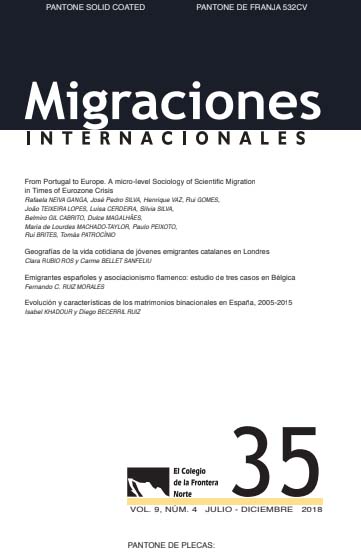
This study examines emigrant associations, specifically those related to flamenco in Brussels and Flanders, comparing the three most representative cases. It is based on an ethnography, completed between 2007 and 2010, on the practices and the importance of flamenco in the Spanish emigrant community. It shows how the three associations that were analyzed are different in their objectives, social bases, and strategies even though they have the same driving force: flamenco. Each one has adapted to local conditions while affirming their own culture and contributing to the integration of the emigrants.

Copyright (c) 2018 Migraciones Internacionales

This work is licensed under a Creative Commons Attribution-NonCommercial-NoDerivatives 4.0 International License.